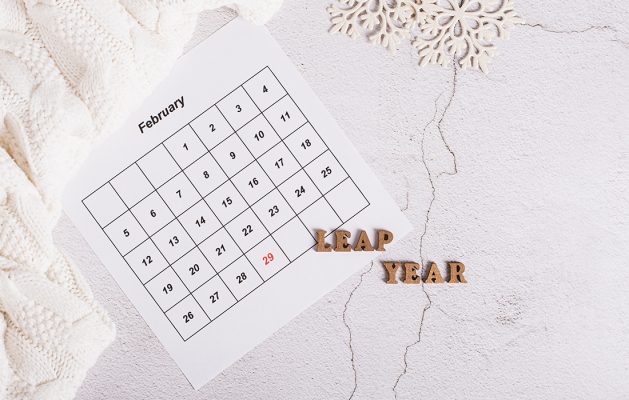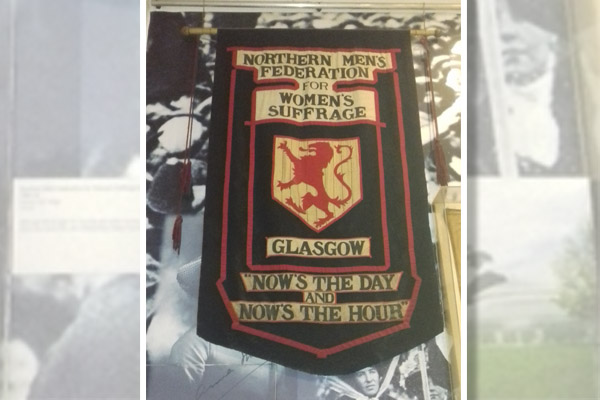The History and Meaning of Leap Years

We all know that leap years occur – but how much do you really understand about their history and meaning? And where do all the associated traditions come from?
If having an extra day inserted into the calendar once every four years sounds like a dream plot point, you’d be right.
Read on to find out everything you need to know about leap years, so you can get the most out of this fantastic literary device – and impress people with some great trivia too!
What is a leap year?
In the widely-used Gregorian calendar, leap year occurs every four years. In a leap year, instead of there being 28 days in February, a 29 February appears. But why?
You’d be forgiven for thinking that it takes the Earth a neat 365 days to orbit the sun. Technically, it actually takes 365.242190 days (that’s 365 days, 5 hours, 48 minutes and 56 seconds).
To keep the calendar in good order, everything after that decimal point is scooped together and re-modelled into an extra four-yearly day.
So, we have three years that are 365 days long followed by one that is 366 days long.
A year that is 366 days long is known as a leap year.
Why is it called a leap year?
The phrase refers to the fact that a fixed date will advance one week day per calendar year – so, for example, during a non-leap year period, if your birthday was on a Tuesday, it would be on a Wednesday the following year.
Adding an extra day into the calendar shakes this system up, meaning that fixed dates occurring after a leap year ‘leap over’ the expected next day in the sequence to the following one.
So, during a leap year period, if your birthday was on a Tuesday, it will ‘leap’ over Wednesday and be on a Thursday the following year.
Leap years are also known as intercalary years and bissextile years.
Why is the extra day added to February?

Pic: Shutterstock / Rui Elena
Simply, it makes the most sense because it is the shortest month. Every other month already has a 29th day, so squeezing it in here makes more sense than, for example, creating a 32 January.
Interestingly – and confusingly – the custom originally was to have two days with the same date.
Although 29 February came into use sometime beforehand, it wasn’t officially written into British law until the Calendar (New Style) Act of 1750.
What happens on 29 February?
There are no interplanetary bells and whistles on the auspicious 29 February – it’s just a normal day. But humans being creatures of culture, a number of traditions have popped up over the years to mark it out as special.
The best known of these is perhaps the lore that it was the one day in the year where a woman could propose to a man, in the days when there were otherwise strict rules surrounding marriage rituals.
This was said to have originated in fifth-century Ireland, when Saint Bridget complained to Saint Patrick that women were tired of waiting for men to propose. They were granted special dispensation to take matters into their own hands on 29 February. (Unluckily for Saint Bridget, who promptly asked Saint Patrick to marry her and was rebuffed – though apparently he did gift her a silk cloak instead, so all was not lost.)
This is sometimes known as Ladies’ Privilege or Bachelor’s Day.
In Scotland, there’s an extra tradition of women wearing a red petticoat to propose on 29 February.
But although the day has many exciting and progressive connotations, in some cultures, it’s seen as bad luck.
In Greece, marrying during a leap year, and particularly on a leap day, is considered unlucky.
In Taiwan, there’s a belief that elderly parents are more prone to dying on a leap year – so their married daughters are to return home with pig trotter noodle soup, a dish associated with good health, during February in leap years.
What about people born on 29 February?
According to an AP report, there are 5 million people worldwide who have their birthday on 29 February out of about 8 billion people on the planet.
People who are born on 29 February are known as leaplings, or leapers.
On non-leap years, they tend to celebrate their birthday on 28 February.
Leaplings are said to have two ages – one that counts a birthday every year, and one that only counts their ‘real’ birthday every four years.
There’s a belief in Scotland that people born on a leap year will experience a life full of hardship – though there are many famous and successful people, including motivational speaker Tony Robbins and former astronaut Jack Lousma, who’d beg to differ.
Leap years in popular culture
 One of the most well-known instances of a leap year in popular culture occurs in “The Pirates of Penzance” by Gilbert and Sullivan.
One of the most well-known instances of a leap year in popular culture occurs in “The Pirates of Penzance” by Gilbert and Sullivan.
In the 1879 comic opera, pirate apprentice Frederic discovers that he is bound to serve the pirates until he turns 88 years old – not, in fact, until his 21st birthday – as he is a leapling.
Do you know the history and meaning of the advent wreath?
Keep up with the latest from the “Friend” fiction editor, Lucy Crichton, in her exclusive blog










